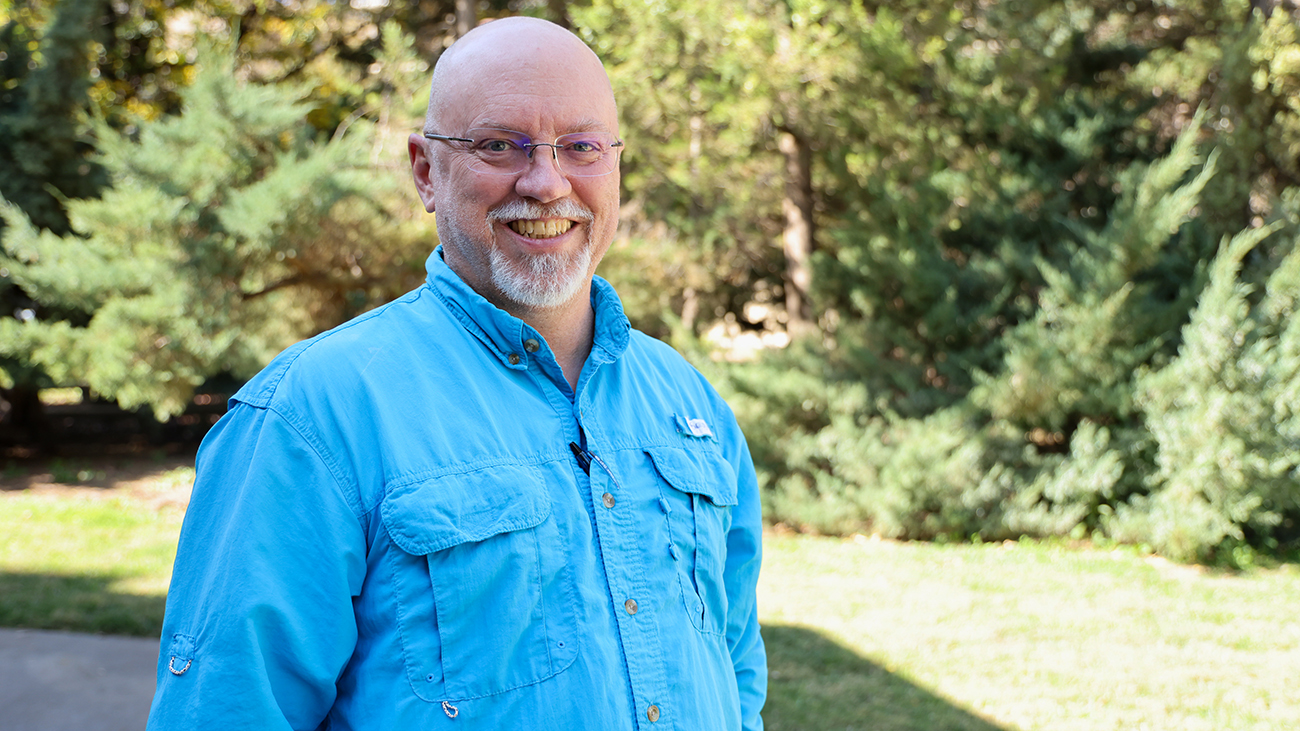- Community
- Featured
- Science
Matlack Named WT’s New Davidson Professor of Wildlife Biology
Copy by Chip Chandler, 806-651-2124, cchandler@wtamu.edu
CANYON, Texas — West Texas A&M University’s expert on all creatures large and small that call this region home is now the University’s new James A. “Buddy” Davidson Professor of Wildlife Biology.
Dr. Ray Matlack, who joined WT in 2002, recently was appointed to the position, announced Dr. Jason Yarbrough, head of both the Department of Life, Earth and Environmental Sciences and the Department of Chemistry and Physics in WT’s Paul Engler College of Agriculture and Natural Sciences.
The Davidson professorship was established in 2012 by the James A. “Buddy” Davidson Charitable Foundation as part of WT’s Share the Pride campaign. The professorship supports the teaching activities and research of a hands-on faculty members utilizing a variety of environments and outdoor learning experiences.
Matlack fits the bill perfectly, Yarbrough said.
“Dr. Matlack is well-known as one of the most enthusiastic, student-centered faculty members at WT, and his dedication to the field of wildlife biology and to his students is exemplary,” Yarbrough said. “His belief in the importance of hands-on fieldwork consistently provides a valuable, dynamic experience for his students.”
Matlack frequently takes graduate and undergraduate students on camping trips to observe birds, bats and mammals in the wild, including visits to the Texas Gulf Coast, the Rocky Mountains in New Mexico and Colorado, and southeast Arizona.
“A degree in wildlife biology requires many hours of work in the classroom and laboratory, but this alone is insufficient. Students must also develop field skills including species identification of reptiles, amphibians, birds and mammals; camping; vehicle and field safety; and various research and management techniques,” Matlack said. “I am honored to be named the Davidson Professor of Wildlife Biology, and I am grateful that this support will help tell the story of the wildlife and wild places we study in a way that will improve my teaching and be used in public outreach and education.”
Matlack—who earned his bachelor’s in wildlife biology and his master’s and Ph.D. in biology at Kansas State University—teaches wildlife conservation, wildlife management, natural history of vertebrates, animal behavior, ornithology and mammalogy.
Current research projects include monitoring free-tailed bats using bridge roosts in Palo Duro Canyon State Park, an inventory of the mammals of Palo Duro Canyon and an examination of the extent of the range of the prairie vole in the Texas Panhandle and eastern New Mexico.
He has been published in Western North American Naturalist, Canadian Journal of Zoology and Journal of Mammology.
The Davidson Foundation was founded in 2002 to honor the late Midland-area oilman and rancher. It supports a variety of charities and educational initiatives in West Texas.
WT soon will boast nearly 90 endowed professorships, offering faculty additional funding for research, travel and more.
During the One West campaign, about 60 new professorships and chairs have been endowed throughout the University—an increase of more than 200 percent during the campaign.
Matlack’s hands-on teaching and interest in regionally based research help fulfill the University’s long-range plan, WT 125: From the Panhandle to the World.
That plan is fueled by the historic One West comprehensive fundraising campaign, which reached its initial $125 million goal 18 months after publicly launching in September 2021. The campaign’s new goal is to reach $175 million by 2025; currently, it has raised more than $150 million.
About West Texas A&M University
WT is located in Canyon, Texas, on a 342-acre residential campus. Established in 1910, the University has been part of The Texas A&M University System since 1990. WT, a Hispanic Serving Institution since 2016, boasts an enrollment of about 10,000 and offers 59 undergraduate degree programs and more than 40 graduate degrees, including two doctoral degrees. The University is also home to the Panhandle-Plains Historical Museum, the largest history museum in the state and the home of one of the Southwest’s finest art collections. The Buffaloes are a member of the NCAA Division II Lone Star Conference and offers 14 men’s and women’s athletics programs.
—WT—

